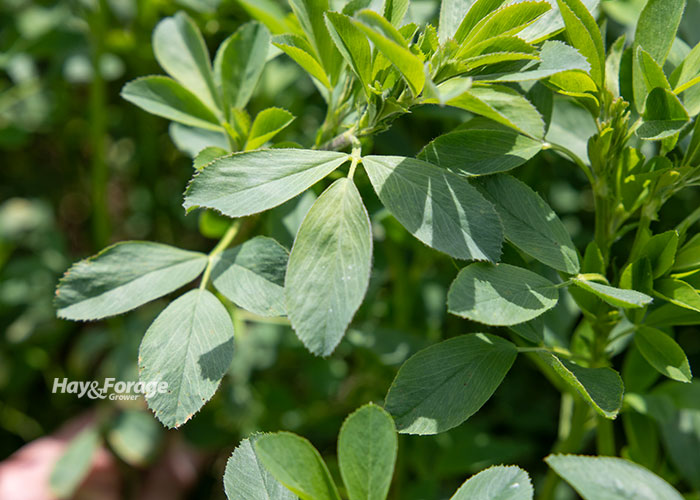
Symbiotic nitrogen fixation is like a business deal between alfalfa and rhizobia bacteria. Alfalfa lets rhizobia live in nodules on its roots and provides the bacteria with nutrients produced during photosynthesis. In return, rhizobia convert organic nitrogen in the atmosphere to an inorganic form available to alfalfa.
Alfalfa and rhizobia are particularly good business partners. In a recent issue of the Midwest Forage Association’s Forage Focus, Barney Geddes with North Dakota State University says legumes like soybeans and dry beans obtain approximately 80% and 50% of their nitrogen requirements through symbiotic nitrogen fixation, respectively. Alfalfa can meet nearly all of its nitrogen needs through this process.
With that said, not all rhizobia hold up their end of the bargain. Geddes notes naturally occurring rhizobia have variable capabilities to supply alfalfa with nitrogen. Inoculating alfalfa seed can help promote better relationships between these plants and bacteria, but sometimes commercial inoculants fail to compete with native rhizobia already in the soil.
“This is because the native rhizobia are already well-adapted to thrive in the local environment,” Geddes explains. “Among the pantheon of options of rhizobia available in the local soil, some may simply be better at colonizing the particular cultivar of alfalfa that is planted through interactions with plant genetics.”
What’s more is the type of rhizobia associated with an alfalfa plant can change over time. “Therefore, even if the inoculant makes it into the nodules in the establishment year, it may be quickly replaced by competitive, less effective rhizobia in subsequent years,” Geddes adds.
Rhizobia research
There isn’t a clear answer as to why some types of rhizobia are better at fixing nitrogen for alfalfa than others. Geddes suggests the bacteria might manipulate the process by hoarding photosynthates from plants and giving little in return. The native rhizobia in a certain field could also be better adapted to a legume other than alfalfa.
“Although there is a lot of specificity in the rhizobium legume symbiosis — for instance, rhizobia for peas cannot form nodules with alfalfa, and vice versa — there are other legumes that can form associations with the same type of rhizobia as alfalfa,” Geddes states.
These hypotheses are currently being tested in a study funded by the National Alfalfa and Forage Alliance. Over 500 types of rhizobia have been isolated from alfalfa stands across North Dakota that vary in plant variety and age. Geddes says the stands also represent a range of soil pH and salinity, which are two soil properties that can inhibit root nodulation.
“We hope to identify a few high-performing rhizobia that show both elite abilities to provide the plant with nitrogen and to compete against native rhizobia for good nodulation formation,” Geddes says. These rhizobia will then be used in inoculation field trials.
“Future implementation of this approach may involve tailoring the rhizobium inoculant to individual varieties or specific soil types,” Geddes concludes. “We expect to gain insight on how much of each of these factors influences which rhizobia perform best over the course of this study.”

